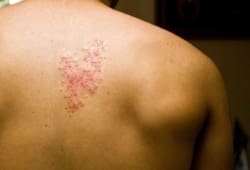It’s common for runners to overdo it. In fact, up to 70% of runners develop injuries each year. They most often occur because of a training error. You may run too far, too fast, or too soon after an injury. As a runner, it’s important to take care of your body to avoid injuries.
Path to improved health
You can lower your risk of running injuries by doing the following:
- Start slow if you’re new to running. Alternate walking and running to ease into it.
- Don’t increase your running mileage by more than 10% per week.
- Don’t run more than 45 miles per week. There is little proof that running this much improves your performance. In fact, it can increase your risk of an overuse injury.
- Don’t run on slanted or uneven surfaces. The best running surface is soft, flat ground.
- Don’t “run through pain.” Pain is a sign that something is wrong. You shouldn’t ignore it.
- If you have pain when you run, rest for 2 to 3 days and use ice. See your doctor if the pain continues for 1 week.
- Alternate hard running or training days with easy days.
- Change your running shoes every 500 miles. At this distance, shoes can no longer absorb the shock of running.
Stretching and strengthening exercises can prevent injuries. Here are some exercises to try:
Stretching exercises
Hamstring stretch
Sit with your right leg straight in front of you and your left leg bent to the side. With your back straight and your head up, lean forward at your waist. Try to touch your toes. You should feel the stretch along the underside of your thigh. Hold the stretch for 10 to 15 seconds. Repeat and switch legs. This exercise may be helpful for people who have:
- Patellofemoral pain syndrome (PFPS or “runner’s knee”): Pain under and around the kneecap.
- Patellar tendinitis: Inflammation of the tendon that connects the knee and knee cap.
- Hamstring strain: Overstretching or tearing of the muscles on the back of the thigh.
Iliotibial (IT) band stretch
Sit with your right leg straight in front of you and your left leg crossed over it. Twist at your waist to the left and pull your left leg across your chest. You should feel the stretch along the side of your hip and IT band. Hold the stretch for 10 to 15 seconds. Repeat and switch legs. This exercise will be helpful for IT band injuries.
Groin stretch
Sit with your legs bent and knees open to the side. Hold your feet together. Keep your back straight, head up, and elbows on the inside of your knees. Push down on the inside of your knees with your elbows. You should feel the stretch along the inside of your thighs. You can lean forward over your legs to increase the stretch. Hold the stretch for 10 to 15 seconds. Repeat. This exercise may be helpful for adductor strains, which is overstretching of the groin muscles.
Quadriceps stretch
Quadriceps are the muscles that cover your thighs. Stand straight on both legs. Bend your right leg behind you and take hold of your foot. Pull your right heel toward your buttocks. You should feel the stretch in the front of your thigh. Hold the stretch for 10 to 15 seconds. Repeat and switch legs. This exercise may be helpful for PFPS, patellar tendinitis, and IT band injuries.
Calf stretch
Stand with your hands against a wall and your right leg behind your left leg. Keep your right leg straight, heel flat on the floor, and foot pointed straight ahead. Bend your left leg, making sure your knees are over your toes, and lean forward. You should feel the stretch in the middle of your calf. Hold the stretch for 10 to 15 seconds. Repeat and switch legs. This exercise may be helpful for:
- Achilles tendinitis: Inflammation of the Achilles tendon, the large tendon at the back of the ankle.
- Plantar fasciitis: Heel pain.
- Calcaneal apophysitis: Inflammation where the Achilles tendon attaches to the heel. This is more common in children.
Plantar fascia stretch
Stand straight with your hands against a wall and your right leg slightly behind your other leg. Keep your heels flat on the floor. Bend both knees, making sure your knees are over your toes. You should feel the stretch in your heel, arch, and lower part of your leg. Hold the stretch for 10 to 15 seconds. Repeat and switch legs. This exercise may be helpful for plantar fasciitis, calcaneal apophysitis, and Achilles tendinitis.
Strengthening exercises
Straight leg lift
Lie down on your back, then support your upper body on your elbows. Raise your right leg off the floor in 4 counts, hold for 2 counts, and lower it in 4 counts. This will engage the top of the thigh muscles in your right leg. Relax your leg and thigh muscles. Repeat and switch legs. This exercise may be helpful for PFPS and patellar tendinitis.
Side leg lift
Lie down on your right side. Raise your left leg off the floor in 4 counts, hold for 2 counts, and lower it in 4 counts. This will engage the thigh muscles of your left leg. Relax your leg and thigh muscles. Repeat and switch legs. This exercise may be helpful for IT band injuries.
Inner thigh lift
Lie down on your right side with your left leg crossed over the knee of your right leg. Raise your right leg about 6 to 8 inches off the floor. Hold for 2 seconds and then lower it back down. This will engage the inner thigh muscle of your right leg. Relax your leg and thigh muscles. Repeat and switch legs. This exercise may be helpful for adductor strains.
Lying leg lift
Lie down on your stomach. Raise your right leg off the floor in 4 counts, hold for 2 counts, and lower in 4 counts. This will engage the thigh muscles of your right leg. Relax your leg and thigh muscles. Repeat and switch legs. This exercise may be helpful for hamstring strains.
Standing wall slide
Stand with your back against the wall. Your feet should be slightly apart and 6 to 8 inches away from the wall. Bend your legs and lower your back and hips about one-third of the way down the wall. Make sure your knees are over your toes. Hold the position for about 10 seconds or until you feel your thigh muscles become tired. Straighten back up to standing. Repeat. This exercise may be helpful for PFPS and patellar tendinitis.
Lateral step-ups
Start with both legs on a stair or platform that is 4 to 6 inches high. Lower your right leg, putting your heel on the floor. Straighten the knee of your left leg, allowing the foot of your right leg to lift slightly off the floor. Repeat and switch legs. This exercise may be helpful for PFPS and patellar tendinitis.
Walking lunge
Stand straight on both legs. Step your right leg forward about a foot and keep your heels on the ground. Bend both legs, making sure your knees are in line with your toes. Hold for 2 seconds. Straighten your legs. Repeat and switch legs. This exercise may be helpful for PFPS and patellar tendinitis.
Now that you know the exercise to do, follow these rules to get the most benefit:
- Be consistent. Do 3 sets of each exercise with 10 repetitions in each set. You should hold each stretch until you feel tension but not pain.
- Never bounce with a stretch.
- Make sure you exercise both legs equally.
- Try not to favor a leg that is weaker or injured.
- You can add ankle weights as the exercises become easier for you.
- Stretch every day.
- Stretches also can be part of an injury recovery plan.
Things to consider
Some doctors suggest wearing orthotics or compression socks or sleeves when running. These can help prevent running injuries.
Orthotics are shoe inserts that can correct bad alignment between your foot and lower leg. You may need orthotics if your feet turn in, a problem called pronation. If you have bad alignment but don’t have pain or injuries from running, you probably don’t need orthotics.
Compression socks and sleeves help increase circulation. People who run a lot and have poor blood flow may need to wear these.
Questions to ask your doctor
- Should I do stretching and strengthening exercises before I run? After? Both?
- How do I treat a running injury?
- If I have an overuse injury, how long do I need to rest from running?
- How do I know if I need to wear orthotics or compression socks or sleeves?
![]()
Copyright © American Academy of Family Physicians
This information provides a general overview and may not apply to everyone. Talk to your family doctor to find out if this information applies to you and to get more information on this subject.







